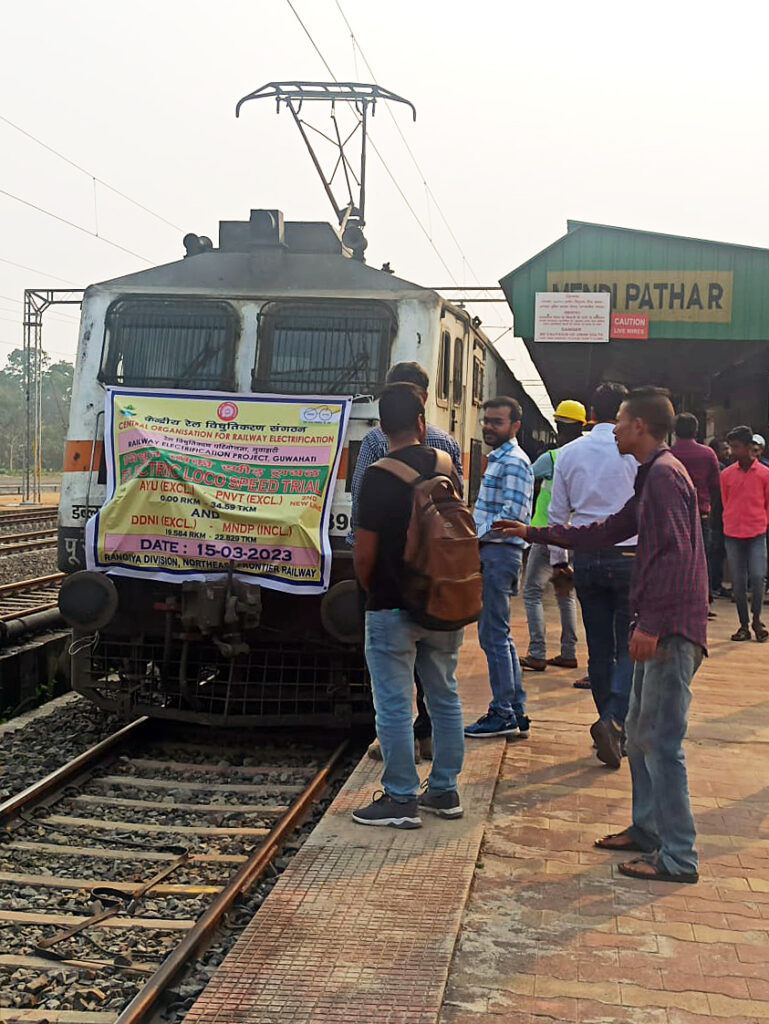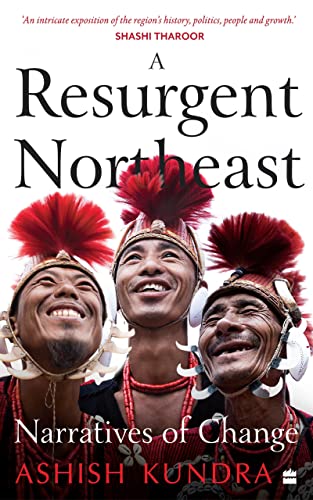Ashish Kundra, in his book, ‘A Resurgent Northeast’, says with conviction that for most of India’s existence, its Northeast has lived in the shadow of the mainland.
A top bureaucrat bubbling with ideas landed in northeastern India, which, for long, had looked at everything New Delhi did with a tinge of suspicion.
But it was a whole new world for Ashish Kundra who was ready to kiss the earth to understand the people, their symbols of development. And, of course, their everlasting hunger for a better life. So, let’s get into Kundra’s A Resurgent Northeast: Narratives of Change.
The book from Harper Collins doesn’t say if Kundra’s mind was clouded by the stereotypes of India’s northeastern states. Many painted the states and its populace in black and the region into a strange, alien land. The New York Times had once even said northeast India was part of one of the world’s last great ungoverned spaces. Many experts had even said the troubled cluster—then five states and two territories and connected to the rest of India through a narrow ribbon of land between Bangladesh and Nepal—never fully reconciled to Central rule. Perhaps it was partially true.
But Kundra saw a new life and found loads of meaning in a challenging terrain—his book says it all.
Kundra says with conviction that for most of India’s existence, its Northeast has lived in the shadow of the mainland. Writing the foreword, Arunachal Pradesh Chief Minister Pema Khandu says very strongly: “Geographical isolation, compounded by a deep emotion chasm, left our people alienated from the rest of India.” Somewhere in his notes and also in the book, I felt the author explains very clearly what people of the northeastern states have felt. They are not averse to modern lifestyles, they were, probably, against loss of ethnic homelands and rule by outsiders. It is a region where major conflicts have long been about separate identities and homelands. The book makes it clear that if these people were given enough political autonomy over their areas, most would gladly join the modern, globalised world. And this has been happening for the last decade. Kundra talks about this very change and says it is for the benefit of India.
Kundra introduced the book in style, almost like enlightening Delhi’s Khan Market and Mumbai’s Bombay Club to a new world. He talked about Gabriel Garcia Marquez and the writer’s words that it was the Western construct that led to the solitude of Latin America. And then, in the same breath, Kundra wrote: “Marquz’s impassioned speech shone the light on a flawed European perception of Latin American reality. Had he been born in India’s Northeast, his speech would have followed a similar script, except that he would have pointed a finger at mainland India.”
The author, I felt very strongly, is talking about a mindset. It is a mindset that nearly destroyed the Northeast, and now it is a new mindset of New Delhi that is encouraging the Northeast to be actively involved in India’s economic development. It is a big change in a region where borders not only split ethnic groups, even families.
During his posting in the region, Kundra soaked in the winds of change in the land of fertile river valleys, tea estates and forested mountains. Kundra was an administrator and policymaker in Mizoram and Arunachal Pradesh, and his tenures helped him understand the land and its people. Kundra developed friendship through some unique, long-drawn conversations. It seemed the blue skies of the Northeast opened up, the author saw a new world and realised why there was a long shadow of strife, and why people of the region lived behind the iron wall. And why were they now coming out to blend the pulse of a new Northeast with India (no, the author would not like the rest of the nation to be called mainstream).
So, who messed up the Northeast?
Kundra says people of this frontier land faced monumental neglect from New Delhi (read the Indian government) for over 70 years as a result of Jawaharlal Nehru’s approach of minimal government intervention in this region. But Kundra, the policymaker and administrator, saw active engagement from the region; there was no indifference. It was music to his ears, pleasure to his eyes because the region is now brimming with renewed hope.

I particularly liked the chapter, “Nehru’s Misplaced Utopia”, where he says Nehru’s decision to lean on Oxford-educated anthropologist Verrier Elwin and make him an advisor for tribal affairs was a very wrong decision. Elwin spent a little over two decades in what was then known as North Eastern Frontier Agency (NEFA). Elwin’s A Philosophy for NEFA was backed by Nehru and the nation’s first Prime Minister eventually carved out five guiding principles—titled Panchsheel—for tribal development. It was an unmitigated disaster. Worse, the audacious Chinese incursion through NEFA in 1962 brought Elwin’s ideas to splinters. Elwin eventually agreed to his mistake, says Kundra. The author brilliantly writes: “Elwin concluded that whether we like or not, whether they like or not, they are going to be civilised. In his book The Tribal World of Verrier Elwin, he overturned the original Nehruvian Panchsheel.” But by then, grave damage had been done.
And after seven long years, the region is now coming into its own and Kundra sets the tone using the past of the seven sisters to weave his narrative of change and the future course of action in the region. Kundra is sentimental, he shows empathy and urges readers to evaluate and understand the people of the Northeast dispassionately. Somewhere in the book Kundra reminds Indians to spare a drop or two when he writes about decades of repression the Mizos faced from soldiers of the Indian Army.
And then, probably very proudly, Kundra writes Mizoram is a wonderful, peaceful state. Kundra is not just writing a tome, he is opening up a region to the whole of India. He says the world’s sweetest and juiciest oranges are found in Dambuk, a sleepy town in Arunachal Pradesh. How many of us know it? We are still sold on the Nagpur story, right? This is not a book, this is a song of the road, almost like the story of the poor villagers written by some of India’s top writers who always lived in the hinterland and wrote earthy tales. Kundra did the same, like a modern Apu of Pather Panchali he walked through the villages and saw—for himself—the Aizwal market of locals and interacted with people at the ever-crowded Bogibeel Ghat in Dibrugarh. He truly kissed the earth.

Kundra is asking Indians to rise and look at the Northeast Sun, he is asking Indians to embrace people from the Seven Sisters and bring them into the big fold of the billion-plus nation. At times, he is annoyed, he is asking why India, sorry Indians, were not aware about this wonderful, magical land.
Kundra is from Chandigarh and was posted in Mizoram in 2000 and started thinking of the book since then. The author has a great ability to weave through various layers of the state and that too without any political or cultural bias, without any weaknesses. Kundra is the lone ranger from the so-called mainland who has walked like the Phantom through the states—though not all of them—and raised meaningful questions. He wants New Delhi to end corruption, wants women to tell their males to work hard and also wants to end age-old practice like polygamy (when husbands bring home another woman despite having a wife), and wants the North Eastern Council (NEC) to be active and not spend time bickering about benefits and cash. He wants the NEC to be remodelled, and wants an integrated market in the Northeast connected with three regional hubs: Guwahati, Agartala and Imphal, with integrated cold chains and warehouses. Will the NEC raise its head and work? Kundra is raising some very valid issues.
He knows the Centre is pumping in cash for allocation
Kundra is asking tough questions.
Is he going overboard, venturing into the unknown? No, Kundra is what a bureaucrat should be: He must ask the right questions and force the government to provide the right answers. Only then good governance will set in.

